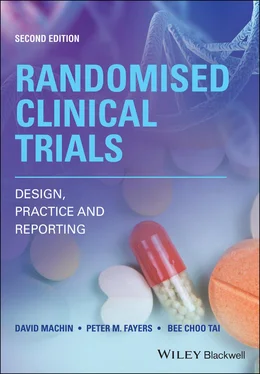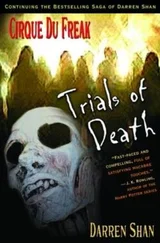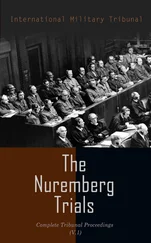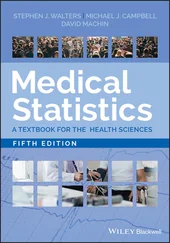Example 3.9 Protocol SQNP01 (1997): Standard radiotherapy versus concurrent chemo‐radiotherapy followed by adjuvant chemotherapy for locally advanced (non‐metastatic) nasopharyngeal cancer
| Therapy |
Dose |
Route |
Days |
| CisDDP |
i) 25 mg/m 2/day for 4 days |
IV over 6–8 hours |
1–4 (Week 1) |
| 22–25 (Week 4) |
| 43–46 (Week 7) |
| ii) Alternatively, 30/30/40 mg/m 2/day for 3 days, if patient starts RT on a Wednesday and only for the first cycle |
1–3 (Week 1) |
| 22–25 (Week 4) |
| 43–46 (Week 7) |
| RT |
200 cGy/day |
Mega‐voltage with or without electrons |
35 daily treatments |
Example 3.10 Protocol SQOLP01 (1999): Comparison of steroid with cyclosporine for the topical treatment of oral lichen planus
Dose and duration
Steroid (S) – Triamcinolone acetonide 0.1% in oral base (Kenalog)
This is administered by topical application by the patients themselves. Patients are instructed to apply a small dab of the paste (about ½ cm) three times daily after meals. Treatment continues for 8 weeks.
Cyclosporine (C) – Sandimmun Neoral solution 100 mg cyclosporine/ml
The patients are instructed to apply the cyclosporine solution to the lesions with their fingers, three times daily after meals. Treatment continues for 8 weeks.
Application of topical medication
The topical medication is applied three times a day – after breakfast, after lunch and before going to bed. Patients will be advised to brush their teeth, gargle and dry the area/s of the lesion/s before each application. Emphasis will be made to use a mirror to see where the medication is to be applied. Patients will be asked to note each application in a patient diary, to monitor compliance. They are instructed not to eat, drink or smoke for 30 minutes after the application.
Topical application of the test drugs are not expected to produce severe side effects. However, if toxicity occurs following commencement of therapy, the number of applications, of either S or C , should first be reduced from 3 to 2 and then from 2 to 1 per day. Should the patient continue to experience the same, or greater levels of toxicity, S or C therapy should cease.
The design structure of the SQOLP01 (1999) trial in patients with oral lichen planus has been illustrated in Figure 2.1while the panel above from the protocol describes the treatments given together with dose modifications should they be required. As was the case for the mattress types, the topical treatments concerned and how they should be applied are easily expressed. Clear guidance is given for dose reduction (and possibly cessation) should ‘severe side effects’ occur although none were expected.
On the other hand, in protocol ENSG5 (1990) it was well understood by all the investigators and associated clinical teams that the chemotherapy schedule was indeed highly toxic and that many complex clinical situations could arise as a consequence. However, the teams concerned with treating these children and young adults were all in specialist paediatric oncology centres and there was an established network through which the clinical teams were constantly seeking each other’s advice. Effectively, a ‘virtual’ case review would be established as and when necessary. However, this protocol was launched and completed some time ago and the statement contained within the protocol might be inadequate for current approval processes, which demand greater precision in the specification of details and mechanisms.
Example 3.11 Protocol ENSG5 (1990): Comparison of high dose rapid schedule with conventional schedule chemotherapy for stage 4 neuroblastoma over the age of 1 year
12. MODIFICATION OF THERAPY DUE TO TOXICITY
The aim of the protocol is to administer the maximally tolerated chemotherapy in both arms. There are no specifically determined toxicity modifications but if significant toxicity occurs please contact study co‐ordinators.
Depending on the disease or condition in question, the precise mechanisms for determining which individuals are eligible for the protocol will vary considerably. The protocol should delineate with care the inclusion and exclusion criteria. For example, a general clinic may see many potential patients of a particular type, who will then need to be screened to determine whether they are truly eligible for the trial. In other situations, a clinic may be more specialised in nature so that everyone coming to the clinic has been pre‐screened and is likely to satisfy the requirements of the protocol. The proportion of eligible subjects will vary from trial‐to‐trial. In Protocol UKW3 (1992), the number of operable children with renal (Wilms’) tumours was likely to be less than half of those presenting with the disease.
Example 3.12 Protocol UKW3 (1992): Preoperative chemotherapy in Wilms’ tumour
4. ELIGIBILITY
All patients with renal tumours should be registered with the UKCCSG by the participating centres.
The following patients are eligible for this study:
Patients over 6 months and under 16 years at the time of diagnosis. Clinical and radiological evidence of unilateral Wilms’ tumour considered to be operable – see section 7.
No detectable distant metastases.
No previous treatment for Wilms’ tumour
Although criteria for eligibility to a trial can always be phrased as ‘Inclusions’, it may be appropriate sometimes to highlight some aspects of (non) eligibility more forcibly as ‘Exclusions’. Thus, in a trial of a new oral contraceptive rather than phrase an eligibility condition as, for example: ‘Women who are neither pregnant nor breastfeeding’; one might state under a distinct heading of Exclusions: ‘Women who are pregnant or breastfeeding’. Then the clinical team can more readily identify those individuals who are, or are not, eligible. Therefore, this section of the protocol is often better presented as a series of (short) bullet points rather than as prose. Further, it is also important to list these in as useful sequence as possible, perhaps one that reflects closely the logistics of the clinical examination process. For example, if there is an age restriction on those patients who can enter the trial, this might be at the top of such a bulleted list as age is easily determined in most circumstances; for a patient outside the permitted range, there would be little point in checking further inclusion or exclusion criteria especially if these involve an invasive examination which is not part of routine clinical practice. Also high on the list might be ascertaining whether or not all the protocol treatment options are suitable for the potential trial recruit. This saves time and inconvenience for both the would‐be trial patient and the protocol team. One example is the weight limit of 140 kg in the PRESSURE (2000) protocol although it is listed as last amongst the specified Exclusion criteria. In this case, its low position within the list may well be entirely justified, since such a bodyweight is rare amongst the types of patients concerned.
Example 3.13 Protocol PRESSURE (2000) Section 6.2: Pressure‐relieving support surfaces: a randomised evaluation
6.2 Exclusion criteria
Patients will be excluded from the study if any of the following criteria apply. They:
– have pre‐existing Grade 3, 4 or 5 (Table 1 a) pressure sore on admission
Читать дальше












